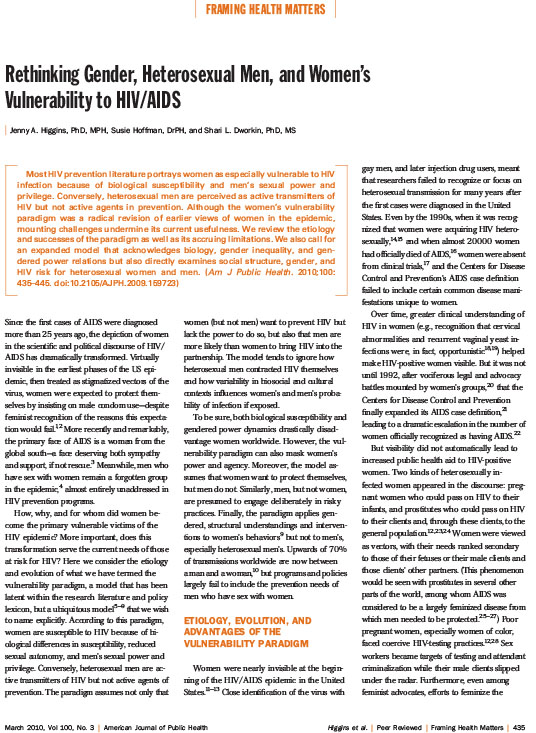Most HIV prevention literature portrays women as especially vulnerable to HIV infection because of biological susceptibility and men’s sexual power and privilege. Conversely, heterosexual men are perceived as active transmitters of HIV but not active agents in prevention. Although the women’s vulnerability paradigm was a radical revision of earlier views of women in the epidemic, mounting challenges undermine its current usefulness. We review the etiology and successes of the paradigm as well as its accruing limitations. We also call for an expanded model that acknowledges biology, gender inequality, and gendered power relations but also directly examines social structure, gender, and HIV risk for heterosexual women and men.
